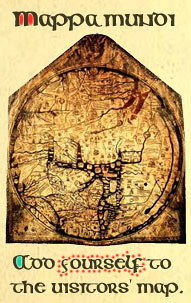Were Europeans first?
The BBC ran a show last Thursday on a new hypothesis concerning early migrations to the
“This version was so accepted that few archaeologists even bothered to look for artefacts from periods before 10,000BC. But when Jim Adavasio continued to dig below the
What’s even more surprising is from where these immigrants may have come.
"[Douglas Wallace] spotted the similarity in production method between the
The Solutreans were a remarkably society, the most innovative and adaptive of the time. They were among the first to discover the value of heat treating flints to increase strength. Bradley was keen to discover if Solutrean flintknapping styles matched
Although the evidence from stone-working techniques is not so impressive, modern genetic techniques provide strong support for this theory.
“In the DNA profile of the Ichigua Native American tribe he identified a lineage that was clearly European in origin, too old to be due to genetic mixing since
The implications of this new theory are obvious:
“The impact of this new prehistory on Native Americans could be grave. They usually consider themselves to be Asian in origin; and to have been subjugated by Europeans after 1492. If they too were partly Europeans, the dividing lines would be instantly blurred. Dr Joallyn Archambault of the American Indian Programme of the Smithsonian Institute offers a positive interpretation, however. Venturing across huge bodies of water, she says, is a clear demonstration of the courage and creativity of the Native Americans' ancestors. Bruce Bradley agrees. He feels his Solutrean Ice Age theory takes into consideration the abilities of people to embrace new places, adding, ‘To ignore this possibility ignores the humanity of people 20,000 years ago.’”




0 Comments:
Post a Comment
<< Home